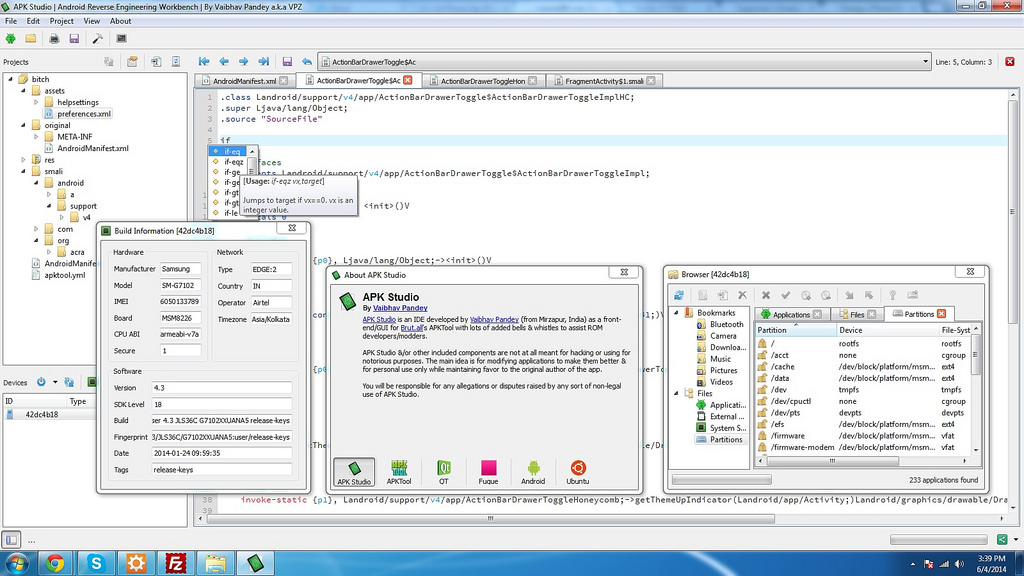A Comprehansive Guide to Recompile APK After Editing

How to Recompile APK After Editing will provide an explanation for how to recompile an APK after modifying it. We will also use simple phrases and short sentences so everyone can comply with alongside. Working with APK documents may be complex. But with the proper steps, anyone can edit and recompile an APK. Whether you need to change the app’s resources, textual content, or features, this guide is here to help.
Let’s get started step by step.
What Is an APK File?
An APK document is brief for “Android Package.” It is the file that Android makes use of to install apps. Think of it as a zip report that includes the whole lot an app wishes to run. This includes:
- The app’s code.
- Images and icons.
- Layout files.
- Sounds.
- Certificates.
When you put in an app from the Play Store, you’re honestly downloading an APK behind the curtain. If you want to edit how an app works or looks, you first want to extract and edit the APK.
Why Recompile an APK?
Once you edit an APK, you can not set up it right away. You must recompile it. Recompiling method turning it again into a working APK file.
Here’s why recompilation is important:
- It applications all the files again.
- Also, It guarantees the app structure is correct.
- It allows installation on Android gadgets.
- It helps take a look at your changes.
Without recompiling, the app won’t work.
What You Need Before Starting:
To recompile an APK, you want some tools and know-how. Don’t worry — it is easy if you comply with the steps.
Here’s what you need:
- A laptop (Windows, Linux, or macOS).
- Java Development Kit (JDK) installed.
- APKTool (for decompiling and recompiling).
- A text or code editor (like Notepad++ or VS Code).
- Android Debug Bridge (ADB) (optionally available, for testing on actual gadgets).
- Keytool and jarsigner (for signing the APK after recompiling).
You can down load APKTool from its legitimate website. Make sure you furthermore may download the wrapper script if you’re on Windows.
Decompile the APK:
Before recompiling, you need to decompile the authentic APK. This extracts the contents so that you can edit them.
Follow these steps:
- Place your APK file inside the equal folder as apktool.
- Open your command set off or terminal.
- Type this command:
apktool d myapp.apk
Replace myapp.apk with the name of your file.
- APKTool will now extract the APK into a new folder.
This folder will contain the app’s resources, smali code, and more. You can now edit anything inside.
Edit the Files:
After decompiling, you can edit the APK content. Here are a few common edits:
- Change strings within the res/values/strings.Xml file.
- Replace snap shots within the res/drawable folder.
- Modify format in res/layout.
- Edit code inside the smali folder (superior).
Use a code editor to make your changes. Always save the files after editing.
Be careful not to break the structure. If a file is missing or corrupt, the APK might not recompile.
Recompile the APK:
Now that you’ve edited the files, it’s time to recompile.
Use the following command:
apktool b myapp -o mynewapp.apk
Here’s what it means:
- Myapp is the folder with the edited documents.
- -o tells apktool to output the end result.
- Mynewapp.Apk is the new compiled APK.
Wait a few seconds. If there are no errors, the new APK file will be created.
Sign the APK:
Before installing your recompiled APK on an Android tool, you need to signal it. Unsigned APKs received’t installation on maximum devices.
Create a Keystore (Only once)
If you don’t already have a keystore, create one using this command:
keytool -genkey -v -keystore mykey.keystore -alias myalias -keyalg RSA -keysize 2048 -validity 10000
You will be asked to enter a password and some details. Remember this information for later.
Sign the APK:
Use the jarsigner tool:
jarsigner -verbose -keystore mykey.keystore mynewapp.apk myalias
Replace:
- Mykey.Keystore together with your keystore file.
- Mynewapp.Apk along with your new APK.
- Myalias with the alias you used.
If the signing is successful, your APK is now ready for installation.
Align the APK (Optional but Recommended)
For better performance and to avoid errors during install, align the APK using zipalign.
Here’s how:
- Download the Android SDK Build Tools.
- Open terminal and use:
zipalign -v 4 mynewapp.apk myalignedapp.apk
This will create a new file myalignedapp.apk.
You can now install this on your Android device.
Step 6: Install the APK on Your Device:
Now it’s time to test your app. If you have got enabled “Install from Unknown Sources,” you may set up the APK immediately.
Using ADB:
- Connect your smartphone via USB.
- Make certain USB debugging is on.
- Use this command:
adb install myalignedapp.apk
Manual Install:
- Copy the APK to your tool.
- Tap the report for your document supervisor.
- Follow the activate to install.
You’ve now edited and recompiled your APK successfully!

Common Errors and Fixes:
- Error: Resource Not Found
- Make sure all files are in the right folders. Check if filenames are correct.
- Error: Smali Build Failed
- This means something went wrong in the code. Try undoing your last change or fixing the syntax.
- Error: APK Not Signed
- Always sign your APK before installing. Use the jarsigner tool as shown above.
- Error: App Crashes on Launch
- This could be due to code issues. Re-check your edits. Make small changes and test often.
Tips for Recompiling APK Files:
- Always backup the unique APK.
- Use a model control tool like Git for big tasks.
- Edit files cautiously, mainly .Smali files.
- Use emulators for brief checking out.
- Don’t recompile apps you don’t personal without permission.
Advanced Tools You Can Try:
Besides APKTool, here are other helpful tools:
- Android Studio – For modifying and building full apps.
- JADX – To view Java code from APKs.
- Bytecode Viewer – For exploring app internals.
- SignAPK – For batch signing apps.
These tools can help you go deeper into APK editing.
Recommended: How to Test APK on Emulator
Conclusion
Recompiling an APK after modifying isn’t hard. But you must follow the steps cautiously. First, decompile the APK. Next, make your adjustments. Then recompile and signal the APK. After that, align and set up it. With practice, you can personalize nearly any Android app. Just be sure to appreciate the regulation and simplest modify apps you personal or have permission to edit. This technique is ideal for gaining knowledge of how apps paintings. It additionally allows you develop your Android talents. Soon, you’ll be enhancing, solving, or maybe developing your own apps from scratch.
Keep exploring. Keep learning. And always make backups before you start.





